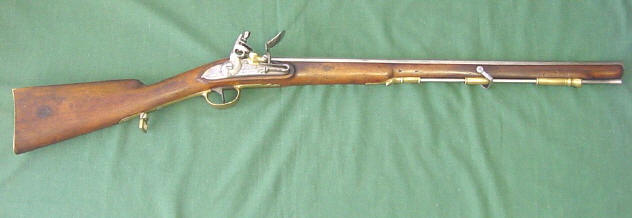
http://www.historyofwar.org/articles/weapons_carbine_nap.html
The carbine of the Napoleonic Wars was a short barrelled, lighter version of the infantry musket. It was the standard weapon of Napoleonic Cavalry used when the cavalry acted as skirmishers, giving them a weapon they could fire on foot or while mounted. As such it was not overly useful in either role and many cavalry refused to use carbines even if issued. This was often the case of heavy cavalry who saw themselves as later day Knights and distained such weapons which they viewed as the weapon of the common infantryman. This attitude was less common among light cavalry and at Eylau the French Chasseurs a Cheval met a Russian cavalry charge with a volley of carbine fire at 6 yds.
The carbines main problem was it's short barrel , nesscecary for use while mounted but drastically reducing its range and accuracy, in a period when firearms were generally inaccurate. This did lead to some countries such as Russia and Britain withdrawing the weapons form heavy cavalry units, an example being the withdrawal from service of the carbines of the British Household Cavalry in 1813. Some countries compromised by issuing a few men per unit with carbines to be used on the units flankers, an example of these 'Flankers' can be seen in Russian service were 16 men per squadron were issued with carbines.
French carbines of the period were generally the best in Europe being longer barrelled than the carbines of other European nations. This allowed them to fire a heavier more lethal shot over greater ranges giving them the edge in skirmishers as the British discovered in the Peninsular War.
No comments:
Post a Comment